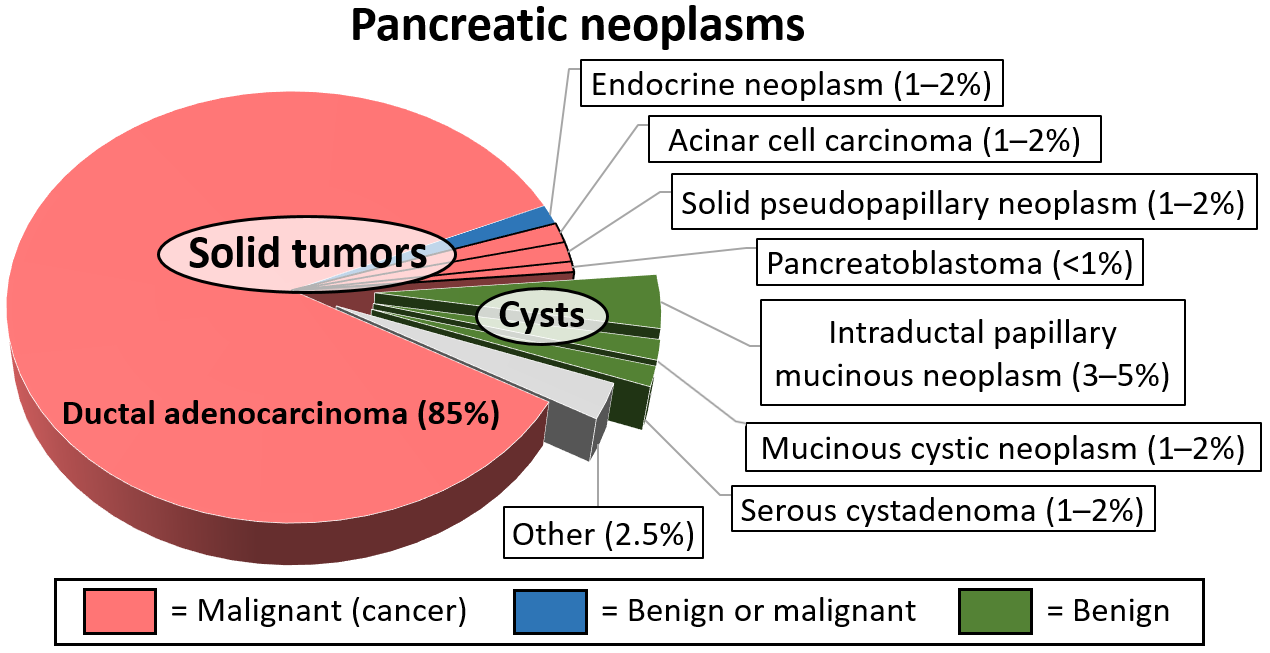Pancreatic cyst on:
[Wikipedia]
[Google]
[Amazon]
 A pancreatic cyst is a fluid filled sac within the
A pancreatic cyst is a fluid filled sac within the
 A pancreatic cyst is a fluid filled sac within the
A pancreatic cyst is a fluid filled sac within the pancreas
The pancreas is an organ of the digestive system and endocrine system of vertebrates. In humans, it is located in the abdomen behind the stomach and functions as a gland. The pancreas is a mixed or heterocrine gland, i.e. it has both an en ...
.
Causes range from benign to malignant. Pancreatic cysts can occur in the setting of pancreatitis
Pancreatitis is a condition characterized by inflammation of the pancreas. The pancreas is a large organ behind the stomach that produces digestive enzymes and a number of hormones. There are two main types: acute pancreatitis, and chronic pancr ...
, though they are only reliably diagnosed 6 weeks after the episode of acute pancreatitis.
Benign tumors such as serous cystadenomas can occur. Main branch intraductal papillary mucinous neoplasms (IPMNs) are associated with dilatation of the main pancreatic duct
The pancreatic duct, or duct of Wirsung (also, the major pancreatic duct due to the existence of an accessory pancreatic duct), is a duct joining the pancreas to the common bile duct. This supplies it with pancreatic juice from the exocrine pancr ...
, while side branch IPMNs are typically benign, and not associated with dilatation. MRCP can help distinguish the position of the cysts relative to the pancreatic duct, and direct appropriate treatment and follow-up. The most common malignancy that can present as a pancreatic cyst is a mucinous cystic neoplasm.
Follow up guidelines
Cysts from 1–5 mm on CT orultrasound
Ultrasound is sound waves with frequencies higher than the upper audible limit of human hearing. Ultrasound is not different from "normal" (audible) sound in its physical properties, except that humans cannot hear it. This limit varies ...
are typically too small to characterize and considered benign. No further imaging follow-up is recommended for these lesions. Cysts from 6–9 mm require a single follow-up in 2–3 years, preferably with magnetic resonance cholangiopancreatography (MRCP) to better evaluate the pancreatic duct. If stable at follow-up, no further imaging follow-up is recommended. For cysts from 1–1.9 cm follow-up is suggested with MRCP or multiphasic CT in 1–2 years. If stable at follow-up, the interval of imaging follow-up is increased to 2–3 years. Cysts from 2–2.9 cm have more malignant potential, and a baseline endoscopic ultrasound is suggested, followed by MRCP or multiphasic CT in 6–12 months. If patients are young, surgery may be considered to avoid the need for prolonged surveillance. If these cysts are stable at follow-up, interval imaging follow-up can be done in 1–2 years.
References
External links
* Scholten L, van Huijgevoort N, C, M, van Hooft J, E, Besselink M, G, Del Chiaro M: Pancreatic Cystic Neoplasms: Different Types, Different Management, New Guidelines. Visc Med 2018;34:173-177. doi: 10.1159/000489641 Review article {{Authority control Pancreas disorders Cysts